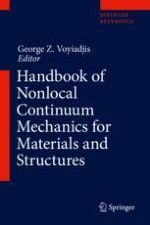2019 | OriginalPaper | Buchkapitel
26. Modeling High-Speed Impact Failure of Metallic Materials: Nonlocal Approaches
verfasst von : George Z. Voyiadjis, Babür Deliktaş
Erschienen in: Handbook of Nonlocal Continuum Mechanics for Materials and Structures
Aktivieren Sie unsere intelligente Suche, um passende Fachinhalte oder Patente zu finden.
Wählen Sie Textabschnitte aus um mit Künstlicher Intelligenz passenden Patente zu finden. powered by
Markieren Sie Textabschnitte, um KI-gestützt weitere passende Inhalte zu finden. powered by
